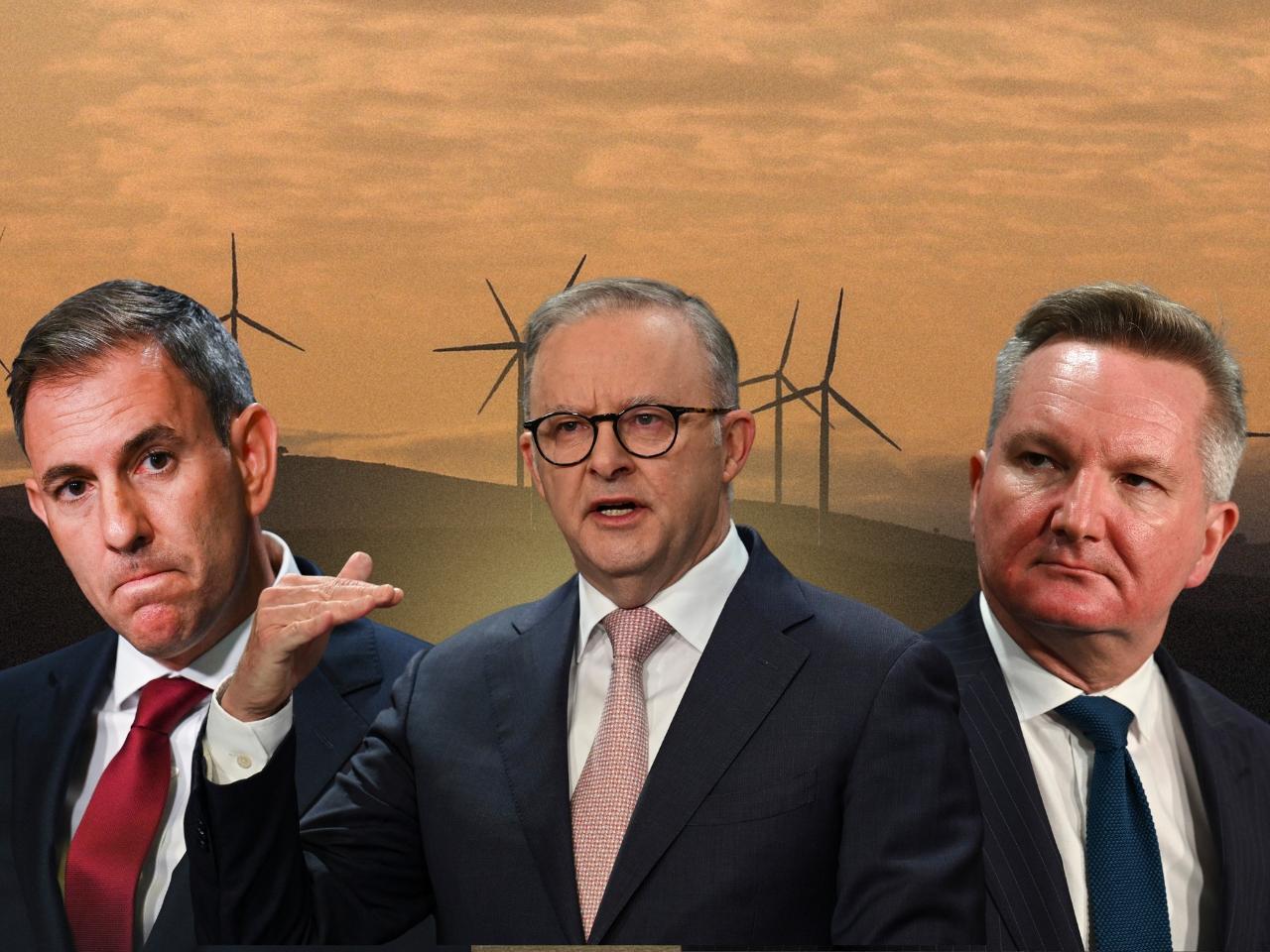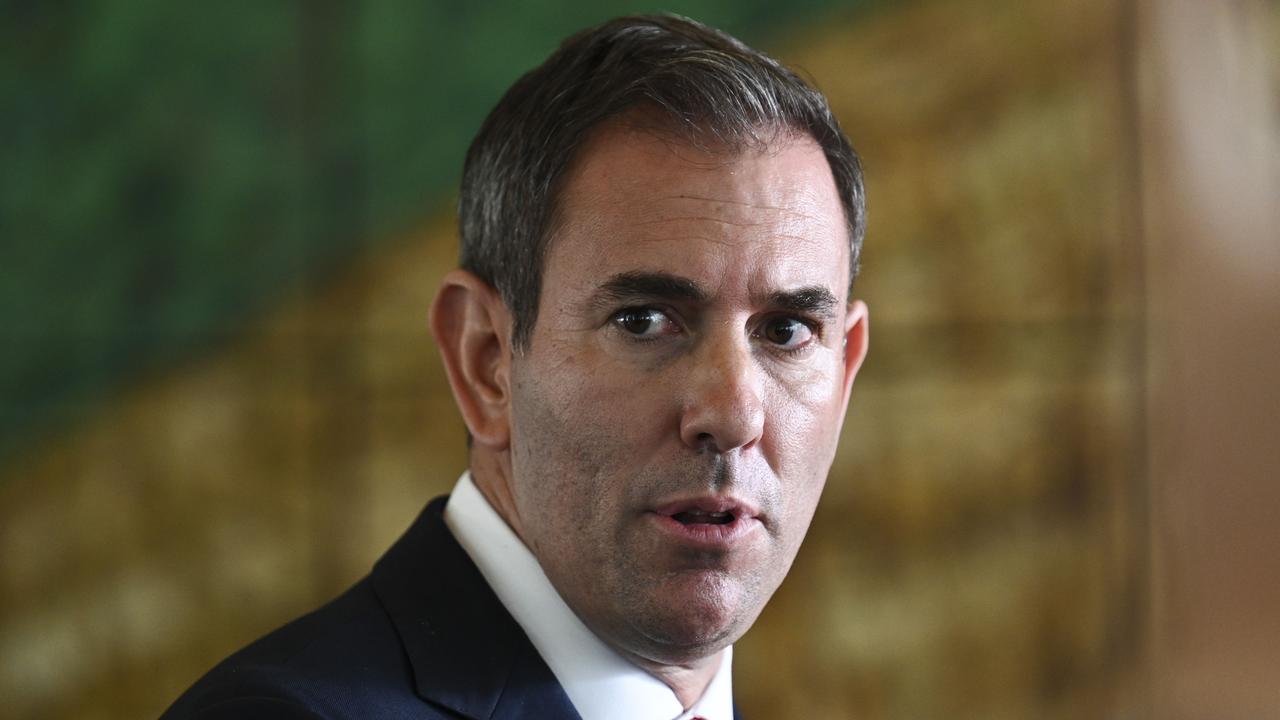Solar sovereignty? Only if we’re powering the ferris wheel at Luna Park
Business owners of Australia, please listen carefully to these people who have never held a full-time job in private enterprise.
By THE MOCKERFrom Commentary2 hours ago5 MINUTE READ244If Prime Minister Anthony Albanese is to be believed, renewables are the cheapest and most efficient form of energy. So cheap and efficient is this industry that it requires billions in taxpayer-funded subsidies to, well, renew itself.
But as Albanese constantly reminds us, Labor is transforming the country into a renewable energy superpower. And as he announced last week, his government will ensure we have sovereign solar capability. How good is this that?
That would be an extraordinary achievement and even more ambitious than Albanese’s promise to achieve 82 per cent renewable energy by 2030. The latter alone requires installing, in addition to 40 wind turbines per month, 22,000 solar panels a day. Currently Australia is home to one solar panel manufacturer. Suffice to say we could achieve sovereign solar capability if our energy needs were limited to keeping the Ferris wheel turning at Sydney’s Luna Park, at least during the day.
But make no mistake: Albanese’s proposed Future Made in Australia Act will realise his vision. To quote from his announcement, it is simply a matter of “turbocharging our engagement”, “surfing the opportunities of the next wave”, drawing “together the threads from across the economy and around our nation” and “catalysing new investment”. Sounds feasible and well thought out, I’m sure you’ll agree.
Albanese epitomises the careerist politician, but nonetheless his entrepreneurial sagacity is extraordinary. This is all the more remarkable considering his experience in business consists of working at the Commonwealth Bank as a teenager, and we can only assume his position there was not that of teller but instead economic policy adviser.
Under his prime ministership, business has thrived. You need only ask any of the 130,000 workers employed in the last 12 months to service the needs of the uncapped and ballooning $42 billion National Disability Insurance Scheme.
Standing alongside Albanese is a bevy of ministers who have never held a full-time job in private enterprise yet have big plans for business. Take Finance Minister Katy Gallagher, for example. In March she spoke of her plans for using the federal government’s annual $70 billion procurement budget to “encourage” companies to meet gender equality targets and close the gender pay gap. “We are using our purchasing power to leverage other outcomes that we want to see across government,” said Gallagher.
Energy Minister Chris Bowen went straight from university into politics but proved early in his political career that he too was a tonic for business. He was responsible for border security as immigration minister during the Gillard government years, much to the delight of people-smugglers. Mind you, the fortune they made thanks to his ineptitude is small potatoes compared to what Bowen represents to the likes of Atlassian/AGL billionaire and renewables evangelist Mike Cannon-Brookes.
As for what these massive hand-outs of taxpayer dosh will cause to be manufactured, I’m tipping electoral disquiet followed by record debt. It says much about Albanese’s thought bubble that prominent left-wing economists are urging caution. Last week Productivity Commission chair and former Grattan Institute CEO Danielle Wood warned Albanese’s scheme lacked an exit strategy and could “take jobs and capital investments from elsewhere in the economy where they could generate higher value”.
But according to ALP national president, former treasurer, and eternal surplus-seeker Wayne Swan, she “is completely out of touch with the international reality”. Coming from him, that vindicated Wood on the spot. And given his track record with reality and self-regard, Swan will likely proclaim next that 100 per cent renewable energy can be realised by strategically placing a giant solar panel to capture the radiance emanating from his posterior.
If anyone is out of touch with international reality, it is those who believe this scheme will allow us to compete long-term against China, which produces 80 per cent of the world’s solar panels. As Reuters reported last week, the country’s annual production capacity for finished solar modules last year was 861GW. It is a pet project for Premier Li Qiang, who in March ordered the ramping-up of renewable technology production. No wonder market experts believe that the China-driven global oversupply of solar panels will last for years.
But Albanese believes he has an answer to this. The relative costs of labour in production, he told Sky News last week, had fallen thanks to technology. Presumably it has too for European manufacturers of solar panels, but that has not saved them from either shutting up shop or having to relocate to the US. And conveniently, Albanese does not mention that the production of solar panels requires a tremendous amount of energy. How are Australian manufacturers supposed to compete when our electricity prices are among the highest in the world?
And not for the first time, the Prime Minister and Treasurer Jim Chalmers are sending mixed messages. Writing yesterday in this masthead, the Treasurer stressed that Future Made in Australia was about government incentivising the private sector, not usurping it. Really? Just last week Albanese, at the launch, told journalists that his government “will not be an observer or a spectator” in this experiment. Rather, he said, “we will be a participant, a partner, an investor and enabler”.
It was not long ago that another Labor government decided that billions in subsidies and green technology were the answer to galvanising manufacturing. In 2009, then service economy minister Craig Emerson introduced the draft bill for the new Automotive Transformation Scheme (ATS), which complemented the government’s $6.2 billion A New Car Plan for a Greener Future program.
The ATS, said Emerson, would “enable the industry to adapt to the challenges presented by changing consumer preferences and climate change.” It would provide billions in funding for the car industry over a decade, he said, adding that funding would taper to zero by 2020.
This would “reinvigorate the automotive industry so that it can go on contributing to Australia’s prosperity for decades to come,” said Emerson. By the end of 2017, the Australian car manufacturing industry was kaput. Fortunately for Emerson, his post-ministerial career as an economics consultant has thrived.
My final observation of the Future Made in Australia Act is that tortured syntax does not make for a good title. It leaves itself open to a moniker and an irreverent one at that. ‘The Fubar Act’ perhaps? The acronym stands for two sayings, one of which you will no doubt be familiar. The other? Forever Underwriting Bloody Albo’s Recklessness.
- Forums
- Political Debate
- The ALP. A ship of useless fools
Solar sovereignty? Only if we’re powering the ferris wheel at...
- There are more pages in this discussion • 21 more messages in this thread...
You’re viewing a single post only. To view the entire thread just sign in or Join Now (FREE)
Featured News
Featured News
The Watchlist
BPH
BPH ENERGY LTD
David Breeze, MD & Executive Chairman
David Breeze
MD & Executive Chairman
SPONSORED BY The Market Online
 As Albanese constantly reminds us, Labor is transforming the country into a renewable energy superpower.
As Albanese constantly reminds us, Labor is transforming the country into a renewable energy superpower. Prime Minister Anthony Albanese, and Chris Bowen Minister for Climate Change and Energy pictured at the The Liddell Power Station. Picture: X / @AlboMP
Prime Minister Anthony Albanese, and Chris Bowen Minister for Climate Change and Energy pictured at the The Liddell Power Station. Picture: X / @AlboMP Minister for Climate Change and Energy, Chris Bowen. Picture: NCA NewsWire / Martin Ollman
Minister for Climate Change and Energy, Chris Bowen. Picture: NCA NewsWire / Martin Ollman Treasurer Jim Chalmers. Picture: NCA NewsWire / Martin Ollman
Treasurer Jim Chalmers. Picture: NCA NewsWire / Martin Ollman




